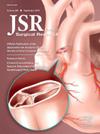烧伤和长期阿片类药物使用
IF 1.7
3区 医学
Q2 SURGERY
引用次数: 0
摘要
阿片类药物暴露是长期使用和依赖的已知危险因素。本研究的目的是确定住院后烧伤患者长期处方阿片类药物使用的患病率,并确定长期依赖的任何危险因素。方法对一年内(2020年2月1日- 21年2月1日)入住烧伤中心的所有患者进行检查。死亡被排除在外。使用受控物质报告系统来确定出院前6个月至出院后12个月的处方阿片类药物使用情况。检查阿片类药物使用的持续时间。长期使用被定义为出院后12个月的有效阿片类药物处方。结果共纳入184例患者。共有54.7%的患者在出院时获得阿片类药物处方。17例患者(9.2%)在1年时持续使用阿片类药物。长期阿片类药物使用的唯一独立危险因素是损伤前使用(P <;0.001)。在17例1年时服用阿片类药物的患者中,16例在伤前6个月内服用了3张或更多阿片类药物处方。唯一一名长期使用阿片类药物且无既往阿片类药物史的患者在首次住院治疗后多次再入院并延迟手术干预。结论大部分烧伤患者出院后均使用阿片类药物控制疼痛。然而,阿片类药物初始患者的治疗持续时间通常较短。在阿片类药物初始患者中,烧伤与长期处方阿片类药物使用无关。本文章由计算机程序翻译,如有差异,请以英文原文为准。
Burn Injury and Long-Term Opioid Use
Introduction
Exposure to opioids is a known risk factor for long-term use and dependence. The purpose of this study was to determine the prevalence of long-term prescription opioid use among burn patients after hospitalization and to identify any risk factors for long-term dependence.
Methods
All patients admitted to a burn center during a single year period (2/1/2020-2/1/21) were examined. Deaths were excluded. A controlled substance reporting system was utilized to determine prescription opioid use from 6 mos prior to 12 mos post discharge. The duration of opioid use was examined. Long-term use was defined as active opioid prescription at 12 mos post discharge.
Results
A total of 184 patients were included in the study. A total of 54.7% of patients received an opioid prescription at discharge. Seventeen patients (9.2%) had persistent opioid use at 1 year. The only independent risk factor identified for long-term opioid use was preinjury use (P < 0.001). Among the 17 patients on opioids at 1 year, 16 had filled three or more opioid prescriptions in the 6 mos prior to injury. The only patient with long-term opioid use without a pre-existing opioid history had multiple readmissions and delayed operative interventions after their initial hospital course.
Conclusions
A majority of burn patients received opioids for pain control following hospital discharge. However, the duration of therapy was generally short among opioid-naive patients. Burn injury was not associated with long-term prescription opioid use among opioid-naive patients.
求助全文
通过发布文献求助,成功后即可免费获取论文全文。
去求助
来源期刊
CiteScore
3.90
自引率
4.50%
发文量
627
审稿时长
138 days
期刊介绍:
The Journal of Surgical Research: Clinical and Laboratory Investigation publishes original articles concerned with clinical and laboratory investigations relevant to surgical practice and teaching. The journal emphasizes reports of clinical investigations or fundamental research bearing directly on surgical management that will be of general interest to a broad range of surgeons and surgical researchers. The articles presented need not have been the products of surgeons or of surgical laboratories.
The Journal of Surgical Research also features review articles and special articles relating to educational, research, or social issues of interest to the academic surgical community.

 求助内容:
求助内容: 应助结果提醒方式:
应助结果提醒方式:


